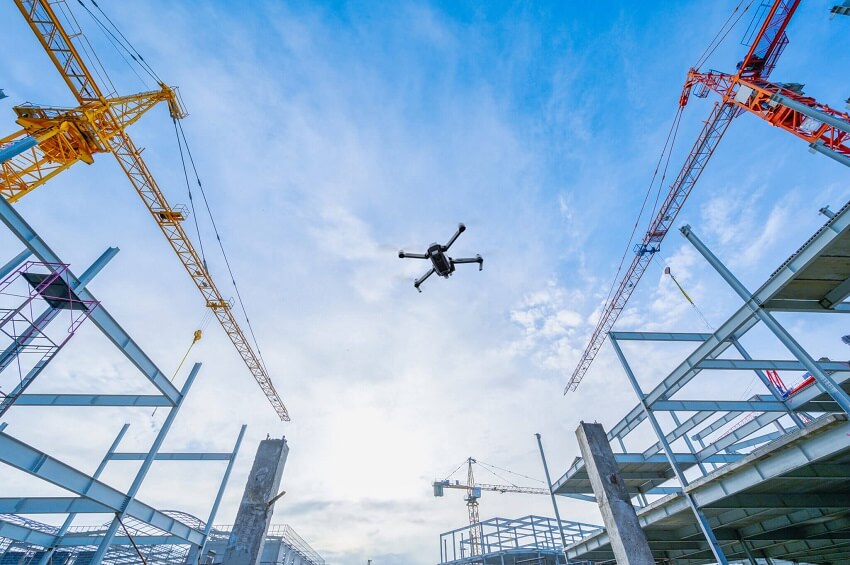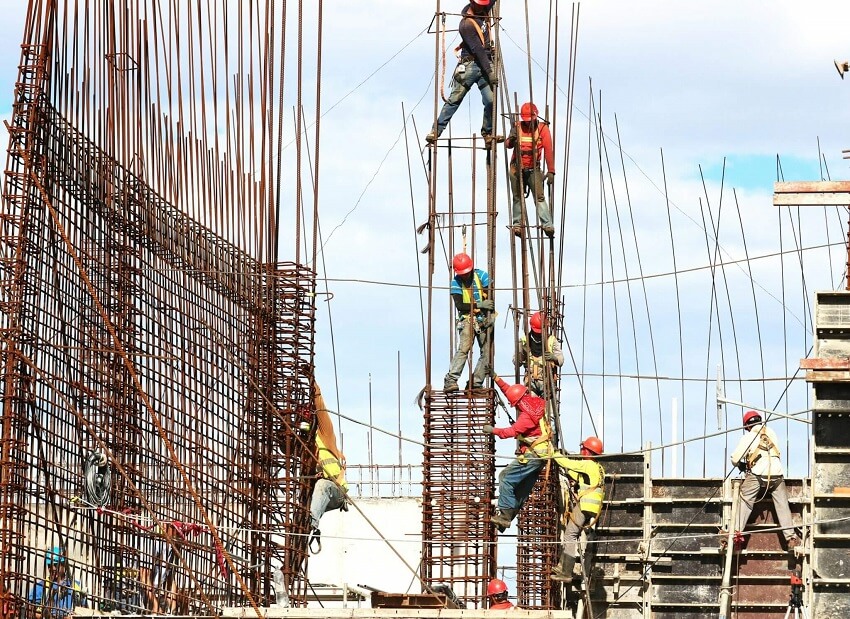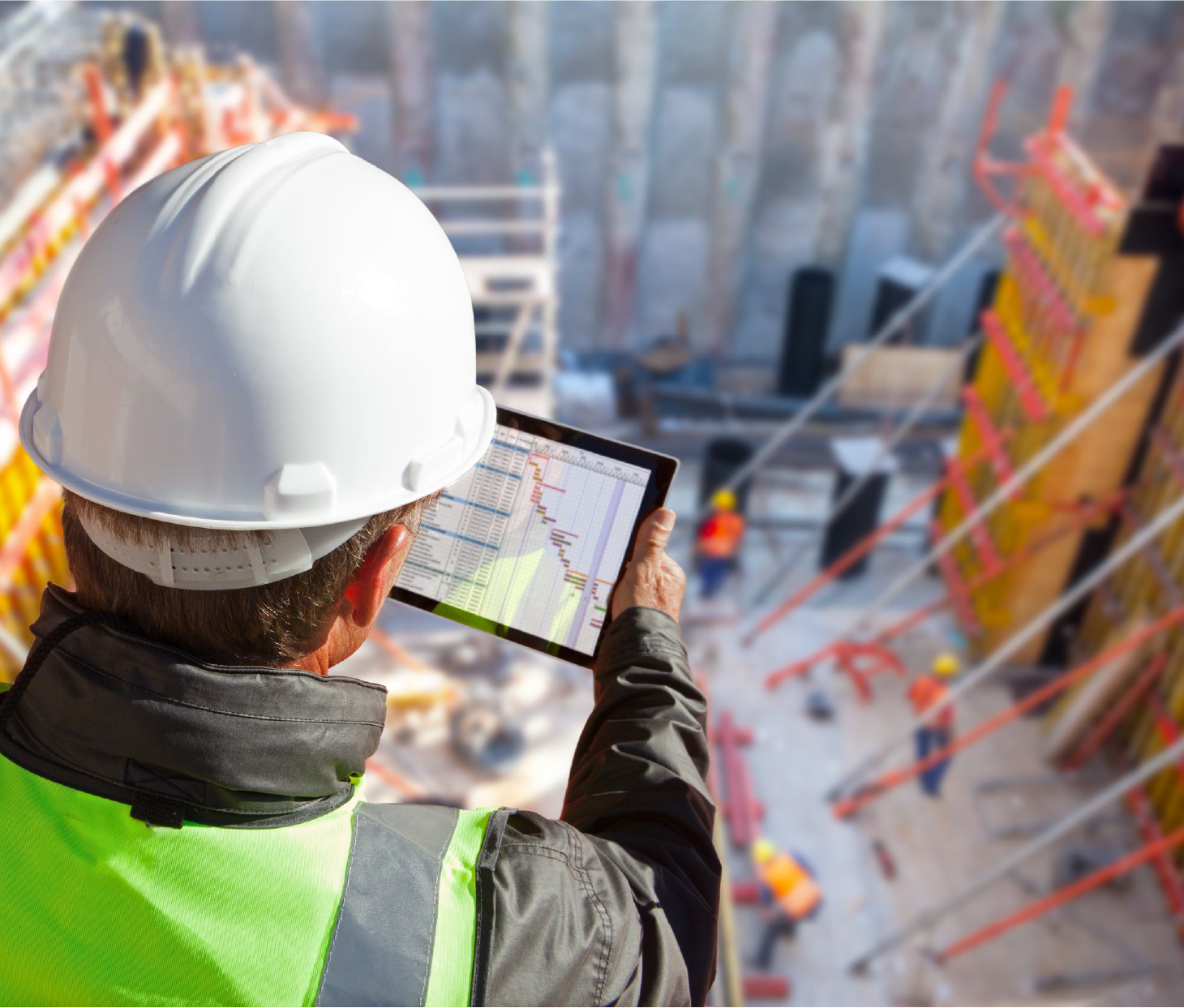From site monitoring to worker safety, cellular networks are driving efficiency, safety, and innovation across construction projects worldwide.
by Nir Elron and Mark Kemp | October 22, 2024
Industries like finance and retail have rapidly embraced Digital Transformation and the use of digital tools to improve business process and contingency planning. In comparison, the adoption in construction has historically been slower. In 2019, McKinsey described the engineering and construction (E&C) sector as one of the world’s least digitized. Recently, the industry began to utilize technologies such as Building Information Modeling (BIM), drones, and IoT, but adoption rates vary among companies, with some already undergoing digital transformation while others still rely on traditional methods and processes. Yet, although there is a large difference in how much technology construction and engineering businesses are currently using, there is widespread intention to adopt more technologies. According to Deloitte’s The State of Digital Adoption in Construction Report 2023, nearly nine in ten (89%) of businesses reported investments or purchases of new technology.
Much like in other verticals, cellular connectivity is foundational to this digital transformation in the construction industry, being a main enabler of enhanced communication, real-time data access, and the integration of various digital tools and technologies. Moreover, it presents multiple benefits for keeping sites and equipment connected without additional spending of time and money on laying down fixed-line infrastructure. This flexibility is especially crucial for dynamic environments, where locations and project needs can change rapidly. It also makes it easier to scale up connectivity as needed, allowing the addition of new devices and users as the projects expand.
In various construction projects, mobile networks are used to improve efficiency and safety, enable collaboration and monitoring, and collect data and insights. Let’s take a look at some of the use cases that demonstrate the wide-ranging applications of cellular connectivity:

Real-time Communications at Construction Sites
One of the most straightforward applications of cellular connectivity in construction is communication – for example, for crane operators. Oftentimes they use smartphones or two-way radios connected to mobile networks to maintain real-time communication with site managers and other crew members. The federal Occupational Safety and Health Administration (OSHA) even had to specifically prohibit the use of cell phones by crane and derrick operators other than when used for signal communications. Even in this case it must be a hands-free system.
Remote Site Monitoring with Cellular-Connected Cameras
Construction sites need surveillance to prevent accidents, theft or vandalism. Cameras help to detect unauthorized access, dangerous and suspicious activity or simply workers not wearing hard hats. Surveillance systems also make managing the building process easier by allowing to perform remote visual audits, monitor site progress, and ensure proper use of technology, safety and compliance.
The vast majority of these use cases benefit from utilizing cellular-connected cameras that transmit live video feeds from construction sites to the cloud. It enables project managers to monitor the construction process remotely in real-time, which is especially critical for contractors who need to oversee numerous projects. Time-lapse capabilities allow to track progress at construction site over time, providing insights into project milestones and helping to identify potential delays. They also provide continuous surveillance to detect trespassing and ensure security, as well as prompt reaction to all accidents.
Cellular connectivity is important for cameras used in all these systems, because more often than not the latter have no access to fixed communications infrastructure. Moreover, construction sites, due to their temporary nature, require connectivity solutions that are mobile and can be quickly deployed or redeployed. In some cases, construction companies use mobile surveillance units (MSU), autonomous trailers equipped with high-resolution cameras that can help build a monitoring system anywhere in the shortest time possible.

Drones and Robots Powered by Cellular Networks
Cellular-connected robots are increasingly used in construction to improve safety and efficiency, which is critical as the industry is facing challenges with labor shortages, an aging workforce and declining interest from younger generations.
Drones equipped with cellular connections can transmit data and video in real-time, facilitating aerial surveys and inspections to monitor assets, map an entire job site for better project planning, capture images of different parts of it for better progress monitoring or detecting potential hazards. In some cases, they even transport materials.
Along with drones, the industry uses autonomous vehicles like self-driving trucks that rely on cellular connectivity for navigation, communication, and real-time data processing. Robotic arm systems are also facilitated for tasks such as bricklaying. They can be controlled remotely via cellular networks, allowing for precise operations in hard-to-reach areas.
Cellular-Enabled Safety Systems and Wearables for Workers
Despite using robots, drones and ongoing automatization, construction remains one of the most dangerous industries. According to OSHA, it has a 1% yearly fatality rate, which is the highest risk among all the occupations in the world. US Bureau of Labor Statistics says that in 2022, nearly 1 in 5 workplace deaths in the country occurred in the construction industry.
Construction companies increasingly use surveillance and video analytics to enhance occupational safety and health, oftentimes as video-surveillance-as-a-service (VSaaS) packages. Along with mounted cameras and mobile surveillance units, these smart surveillance systems may include also hard hat helmet cameras or body cameras. While they stream footage over cellular networks to the cloud for real-time monitoring of unsafe practices or conditions, video analytics systems identify potential hazards, such as workers in crane operation areas or unsafe equipment use, and send alerts to supervisors. In the event of an accident, recorded footage can be reviewed to investigate what happened, help to improve safety protocols and prevent future incidents.
Safety-related cellular connectivity applications in the industry are not limited to drones or video analytics. Many companies all over the world use solutions with cellular-connected wearables that track workers’ location, activities and condition to help prevent accidents or ensure prompt reaction in case of emergency.

Connectivity Requirements
The larger the construction project is, the more use cases there may be for cellular connectivity, and depending on location, objectives and equipment used, some projects may have very specific communications requirements. However, there are some common demands that would be important for most projects.
Coverage
Coverage is crucial for any use case in construction, regardless of application. Oftentimes building sites are in locations with no connectivity options other than mobile networks. Yet even with the robust communication infrastructure available in cities, cellular connectivity is an important backup option for all equipment that needs stable continuous connectivity.
While cellular networks are omnipresent, it is also important to make sure that your connectivity solution can use several carriers’ networks, as all of them may have certain weak spots.
Bandwidth
Bandwidth is critical in all usage scenarios with cameras or any other devices that transmit a lot of data. For example, in use cases that use time-lapse technology, the process of capturing and uploading the individual images to the cloud can require significant bandwidth, especially if high-resolution images are used and the intervals between shots are short. Live video streaming also can be quite demanding in terms of bandwidth, especially for high-definition content.
Enterprises are dependent on a cellular connectivity provider to guarantee a robust and reliable connection. That’s why at the contracting stage, it’s crucial to ensure there are no additional limitations such as throttling.
Latency
Latency is one of the most important connectivity parameters in all use cases that demand immediate reaction to changing conditions. They may range from drones and AGVs depending on low latency for effective operations to workers stepping out in a danger zone or needing help in case of an injury. Since a fraction of a second delay may have catastrophic consequences, it must be noted that actual latency depends on the architecture of mobile operator’s core network and therefore may vary.
Remote Management
Certain equipment, especially deployed in remote locations, oftentimes needs advanced management capabilities that allow to remotely update, configure, and monitor it. This requirement can be key for some use cases because manually handling robots or cameras at a remote construction site can be costly both in terms of time and expenses.

WebbingSolution for Construction Site Connectivity
Webbing offers a connectivity solution that ensures global access to reliable and high-quality internet, with low latency and the best of class coverage. It provides secure and continuous internet connection, delivering a streamlined, centralized, and scalable means of deploying, controlling and monitoring various devices at construction sites in any location.
As a global MVNO, Webbing’s network of 600+ mobile operators guarantee world-wide coverage. It allows to roam on several carriers’ networks in every region, solving the problem of weak spots that any mobile network may have and ensuring full coverage and continuous connectivity even at remote locations.
Webbing’s eSIM solution allows for remote provisioning and a swap between multiple mobile carrier profiles without carrier integration, easily turning it into any operator’s SIM. It also ensures failover connectivity with the option to fall back from a failing profile to a different profile without any need to communicate with a remote server. Webbing’s management portal provides a centralized way to manage eSIMs, as well as visibility into device data usage.
Webbing is a global connectivity provider, with a distributed full-core network with local breakouts, multiple network solution, and data server redundancy that can provide connectivity stability and low latency. As such, Webbing’s IoT network is well suited to support mission-critical, high-data consumption type of use cases. It allows our solutions to enable a whole range of different usage scenarios, from lower consumption cases generating 5 to 15 GB of data monthly to time-lapse surveillance applications that can go beyond 500 GB a month.
Our network supports all types of connectivity regulations, so it’s easy to comply with local and regional regulation requirements. Webbing can also seamlessly localize deployments utilizing Remote SIM Provisioning even in heavily regulated markets.
A flexible approach to data packages allows us to tailor our connectivity offering for every customer based on the type of connected devices and their data consumption needs as well as the locations where the devices are used, aiming at overall optimization of the total cost of operations for the client.
Our solutions ensure the flexibility and scalability needed to deploy any type of connected devices, providing the benefits of roaming with multiple carrier options in every country, and seamless transition between carriers, while maintaining low rates and low latency on a global scale with a single SIM.
Reach out to learn more about our connectivity solutions.




